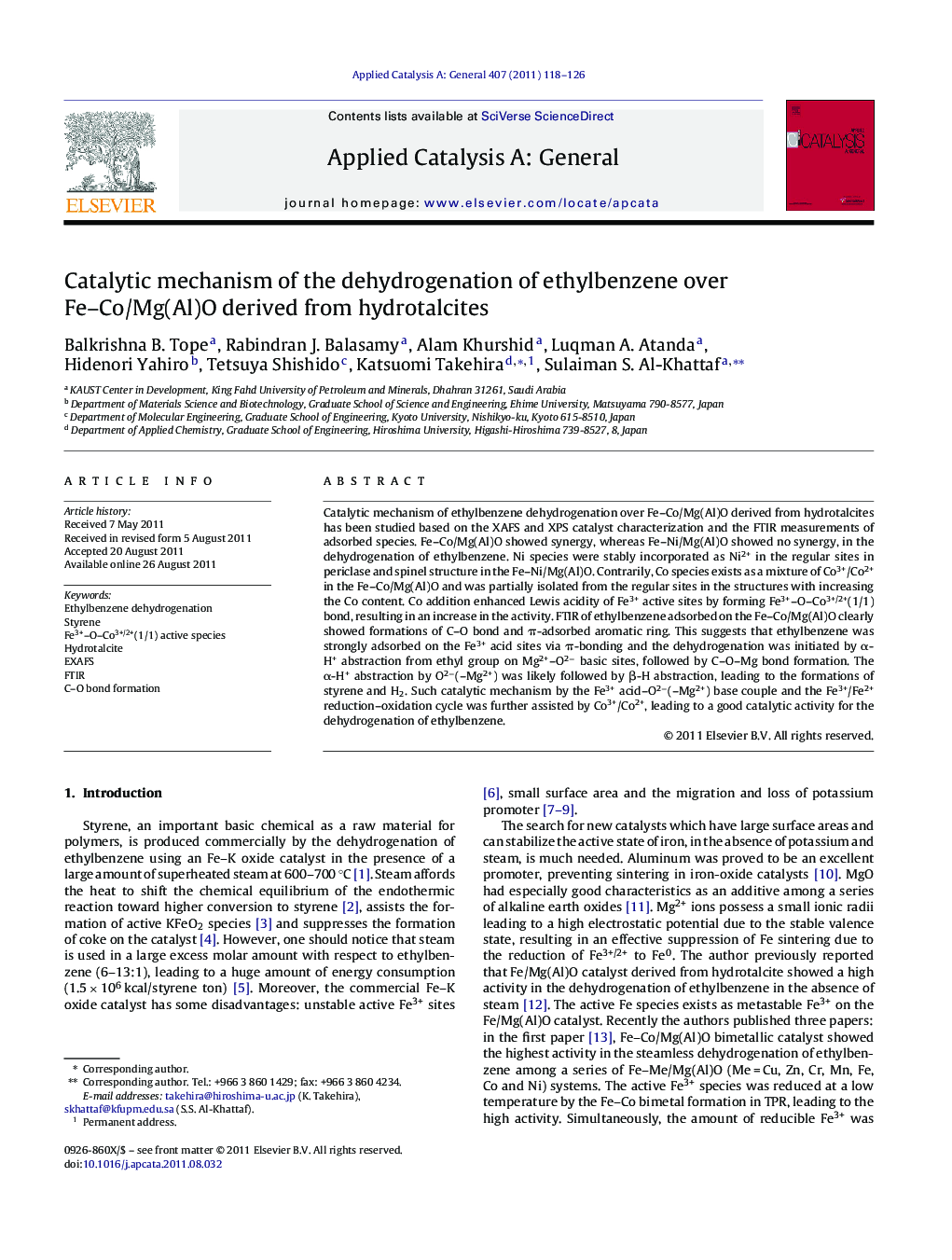| کد مقاله | کد نشریه | سال انتشار | مقاله انگلیسی | نسخه تمام متن |
|---|---|---|---|---|
| 41300 | 45884 | 2011 | 9 صفحه PDF | دانلود رایگان |

Catalytic mechanism of ethylbenzene dehydrogenation over Fe–Co/Mg(Al)O derived from hydrotalcites has been studied based on the XAFS and XPS catalyst characterization and the FTIR measurements of adsorbed species. Fe–Co/Mg(Al)O showed synergy, whereas Fe–Ni/Mg(Al)O showed no synergy, in the dehydrogenation of ethylbenzene. Ni species were stably incorporated as Ni2+ in the regular sites in periclase and spinel structure in the Fe–Ni/Mg(Al)O. Contrarily, Co species exists as a mixture of Co3+/Co2+ in the Fe–Co/Mg(Al)O and was partially isolated from the regular sites in the structures with increasing the Co content. Co addition enhanced Lewis acidity of Fe3+ active sites by forming Fe3+–O–Co3+/2+(1/1) bond, resulting in an increase in the activity. FTIR of ethylbenzene adsorbed on the Fe–Co/Mg(Al)O clearly showed formations of C–O bond and π-adsorbed aromatic ring. This suggests that ethylbenzene was strongly adsorbed on the Fe3+ acid sites via π-bonding and the dehydrogenation was initiated by α-H+ abstraction from ethyl group on Mg2+–O2− basic sites, followed by C–O–Mg bond formation. The α-H+ abstraction by O2−(–Mg2+) was likely followed by β-H abstraction, leading to the formations of styrene and H2. Such catalytic mechanism by the Fe3+ acid–O2−(–Mg2+) base couple and the Fe3+/Fe2+ reduction–oxidation cycle was further assisted by Co3+/Co2+, leading to a good catalytic activity for the dehydrogenation of ethylbenzene.
Figure optionsDownload high-quality image (124 K)Download as PowerPoint slideHighlights
► Fe3+–Co3+/2+(1/1) active species by Fe3+/Fe2+ reduction–oxidation accelerated by Co3+/2+.
► Important role of Fe3+ as Lewis acid sites as well as Mg2+–O2− as base sites on the catalyst.
► Formation of C–O bonding as the reaction intermediate on the catalyst.
► α-H+ abstraction on Mg2+O2− base sites, followed by C–O–Mg bond formation and β-H+ abstraction.
Journal: Applied Catalysis A: General - Volume 407, Issues 1–2, 4 November 2011, Pages 118–126